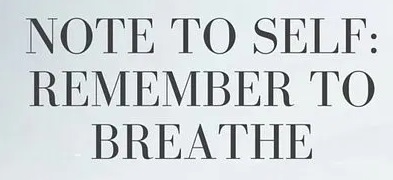Remember to Breathe
by Erik Castiglione
In April 2002 I sailed a 27-foot schooner from Islamorada to Key West and back in a high adventure Scout camp known as Sea Base. Our captain, Cap’n Harm, was a Dutchman with a very thick accent. I must say, Mike Myers really nailed it in “Goldmember.”
Cap’n Harm was an interesting character to say the least. Some examples:
- He didn’t believe in bug spray, because he’d “made a deal with the mosquitoes” and if they didin’t bother him, he wouldn’t kill them.
- He was always ranting about life. His favorite speech which I must have heard 4 times that week, was that life is all about “breasssh.”[1]
On this second point, he’s not wrong. Breathing is how we get oxygen to our cells, which allows cellular respiration (the exchange of nutrients and waste products) to occur. When we exercise, we breath harder and faster for a quicker exchange to power our muscles. We can also learn to breathe properly to stay tight when lifting, to downregulate after a workout, and for mobility purposes. Unfortunately, many of us have forgotten how to breathe properly. So, we’re going to cover the basics, and then show you how to apply them to both performance AND recovery. Enjoy.
Diaphragmatic Breathing
Many of us incorrectly try to breathe into our chests, rather than our bellies. Our rib cage is designed to protect our inner organs, so naturally there isn’t a whole lot of “flex” there. This means that when we breathe into our chests, the movement of our diaphragm is limited, and the expansion of our lungs is restricted. What we want to do instead is practice “belly breathing”, aka diaphragmatic breathing. Learning to use your diaphragm step 1. Check it out:
Bracing (Cannister Breathing)
When we lift weights, we fill our trunks with air. The goal is to engage the core musculature, and our breath supports these muscles. Think of a raft or bike inner tube: your muscles are the rubber exterior, and to ensure rigidity, you need to fill completely with air. As mentioned above, step 1 is to engage the diaphragm. Step 2 is to make sure you can feel the air filling your entire trunk. In other words, you should be able to “breathe” into your lower back, and your obliques. We can do this by building a mind-muscle connection, using crocodile breathing. For this exercise, you’ll be on your stomach. Check it out:
Cannister breathing is the basis of bracing. To brace properly for lifting, we squeeze our entire core, take a cannister breath, and continue to squeeze. Next time you pick up a barbell, use this method to stay tight.
Parasympathetic Breathing
The nervous system is your body’s communication network. One part of it is the autonomic nervous system, which is responsible for unconscious actions. It is comprised of the sympathetic nervous system, which drives our “fight or flight” response, and the parasympathetic nervous system, which we use at rest (aka the “rest and digest” response). When we exercise, necessarily, our sympathetic nervous system is active. To recover from exercise, we need to relax the sympathetic nervous system, and drive our parasympathetic nervous system. We can do this through “parasympathetic breathing.” Simply lie down on your back, raise your legs onto a bench, chair, or box, and take some deep, diaphragmatic breaths. Try to inhale through your nose for 3 seconds, hold it for 3 seconds, exhale through your mouth for 3 seconds, and repeat for 15-20 breaths. Your heartrate will drop, and your body will start to recover more quickly.
If you are stressed out, this technique can help for sure.
Mobility Breathing
I do not have a better name for this, so I’m settling on “mobility breathing.” The idea is simple: anytime you do soft tissue work with a foam roller, lacrosse ball, or other implement, it can be tempting to hold your breath. This is a mistake! Failing to breath drives our sympathetic response, which is not conducive to releasing tension in the body. Dr. Kelly Starrett said it best: if you cannot breathe in a position, you don’t own that position. So, as you dig out painful, stuck tissue, try to implement some diaphragmatic breathing!
Body Breathing
This is a great strategy if you are having a difficult time falling asleep at night. It could be due to tight muscles. We already covered “crocodile breathing”, where you breathe into your lower back. The idea here is to “breathe” into your muscles, starting with your neck and shoulders. Take a deep diaphragmatic breath while simultaneously contracting your neck muscles and traps. Hold it for 2 seconds, and then exhale through your mouth, while relaxing your muscles. Repeat this with your arm muscles, your chest, core, glutes, quads, calves, and toes. Essentially, you’re working from the top of your body down, using one breath per body area.
It sounds stupid, and I was very skeptical when I first heard of this technique. However, I have used it with great success, especially when I’m feeling stressed out at bedtime.
Give these techniques a try, and I hope you find them helpful. Remember to breathe!
[1] It took a couple of listens before we could determine if he was saying “breath” or “breasts.” He was a lonely sea captain, after all.

